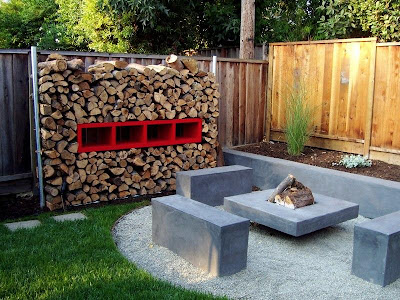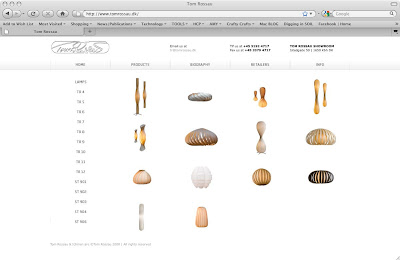 Taking on Water (the engine and pontoon in the foreground is sinking)
Taking on Water (the engine and pontoon in the foreground is sinking)
Day 1: Tuesday, July 20Last Tuesday morning started like any morning. I got to work early hoping to get some writing done. The am hours were clipping along quite well until I receive a call at 10 o'clock. It was the marina manager who told me, "I hate to tell you this, but your boat is taking on a lot of water." I immediately left for the marina, drove who knows how fast, and arrived to find the boat dramatically tipping up on the front right-hand side.
"What do I do?" I wondered. What would you do? I had no idea. Fortunately, the water had not reached the deck, but who knows how long until it did. I knew that I had to drain the pontoons, but how? I was going to get that lesson from the previous owner when they returned from a trip to Mexico. That wasn't until the 25th, and this was the 20th. I searched through the closet, found what looked like a miniature pump (it had two places to attached a hose, one labeled "in" and the other "out"), loosed what I knew to be the pontoon plug, and got to work.
In the meanwhile, I needed to figure out how I would get the pontoon fixed. That required getting it out of the water, but we don't have a trailer. The marina manager suggested Wain (not Wayne), a guy who works at a nearby welding shop. I called Wain, but he didn't think his trailer would work. I call three other places: one was retired, another had a trailer but it was out west, and the third didn't think his trailer would fit our boat. I called Wain back, and he agreed that we could give his trailer, with some modifications, a try the next day.
The rest of Tuesday, I prepared the boat for an overnight stay. I was able to fix the air conditioner. (I can't give myself too much credit, because I really don't know what I'm doing. I just opened the cover and pushed on what looked like a suspended drum. That apparently loosened it enough to get it spinning and cool air blowing.) This was the first night any of us had slept on the boat, and this wasn't the type of occasion I had in mind. I just wanted to be able to monitor the amount of water that came back in the pontoon.
The "slumber party of one" was fine. I dug out my old Nintendo Entertainment System (the old 1985 console) and a few games, hooked them up to an old tv and basically just hung out. That morning, I boiled water for the coffee percolator on the grill. I also baked a few eggs over some sausage I cooked in a cast iron pot. Under other circumstances, it would have been the perfect morning meal on the boat.
 Getting the Boat out of the Water
Getting the Boat out of the Water Wednesday was pretty low key. I pumped more water out of the pontoon, went back to the house to get cleaned up, and began assessing what work I would want to get done on the boat while it was dry docked. The marina gave me a one-week permit to be parked near the dock. After that, I would have to beg for a few more days or move the boat elsewhere. What could I do in a week? Well, I knew I wanted to:
- repaint the railing and railing panels,
- repair the outside decking,
- lay new carpet, and
- fix the gas line for the oven and hot water tank.
The interior needs work, too, but I figured the four tasks I listed above would be easier to accomplish with the boat out of the water. And I was actually looking forward to beginning the restoration process. In fact, I recognized that I was building a weird relationship with this vessel that had just about did me in. It was as if I had been presented with an immense challenge I was determined to accomplish. It was either the boat or me. (I never read
Moby Dick, but I imagine that the sailor had a similar fear/respect/admiration for that karn-sarn whale. The sailor doesn't die in the end, right?)
That evening, Wain called for me to meet him out at the dock. There, he had the trailer hooked to the front of his tractor, which he was able to drive further into the lake to load the boat. It just took two tries for me to get the boat on the trailer. It was a tight fix, and navigating that boat is definitely an acquired skill. He slowly pulled the boat up the ramp to the spot where it finally rested.
Now, the next challenge was bracing the pontoons on the left-hand side. Since there was still so much weight in the boat, it was buckling the entire structure. The only part of the boat resting on the trailer was the middle section. The pontoons hung out on the sides, unsupported. I raced to a few different stores and finally found the proper 3 ton floor jack. I picked up a couple of friends and headed back to the boat. By dark, we had the pontoon properly blocked.
Day 3: Thursday, July 22Around 1:30 am, my dad arrived from Missouri. My mother had already been here helping us take care of our daughter while her daycare is closed for a two-week vacation. That morning, my dad and I got to working labeling and removing the railing and panelings around the boat, tearing up the carpet, and assessing the plywood decking. That afternoon, I wasn't able to work on the boat because I had to finish writing and submitting a conference presentation proposal. Later that evening, we took a break and went to 17th Street BBQ for dinner and another hardware store to check about outdoor carpet. I finally got a hold of my engine guy, Jerry, and made plans to meet him at the boat on Saturday morning.
Day 4: Friday, July 23Today, we continued to take off the railing and panels. I went to check about paint and borrowed an electric pressure washer to clean the pontoons so Wain could assess where our leak was. We soon discovered that the electric washer would not do the trick as quickly as I had hoped. So, my dad and I are now the proud owners of a 2700 psi gas-powered pressure washer. That night, I finished spraying the grime off of the pontoons. Washing the outer sides of the pontoons was no problem, but washing them on the insides underneath the trailer made it a miserably wet and uncomfortable process.
Day 5: Saturday, July 24We met Jerry at the boat at 7am. While he assessed the motors, we scraped the sides of the boat. Fortunately, the engine work will be minimal, at least when compared to the rebuilds we feared. That afternoon, we went to a birthday party at the Trail of Tears park in the Shawnee National Forest. It is absolutely beautiful there.
 Culprit #1: Crack in side of Pontoon that Allowed Water to Reach Culprit #2
Culprit #1: Crack in side of Pontoon that Allowed Water to Reach Culprit #2 Culprit #2: Crack (center of photo) on Top of the Pontoon
Culprit #2: Crack (center of photo) on Top of the Pontoon
Day 6: Sunday, July 25 Today has been the most pleasant day (weather-wise) so far. This morning we scraped the panels. Around 10:30am we went to the boat to begin supporting decking. Wain and (another) Jerry finished welding the cracks in the pontoons. As you can see from the photographs, the spot where they had to weld supports is where the engines are attached. They had not been attached properly and had been pulling on the old welds. We took measurements for boards to support the rest of the flooring and headed back to the house. Right now, we've been resting and I've had enough time to update this blog. I'll continue to post updates as the restoration progresses. Here's to Moby Dick.
 The Naked Boat (Let's Hope She Looks Better in a Week)
The Naked Boat (Let's Hope She Looks Better in a Week)


































